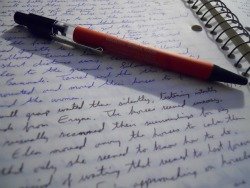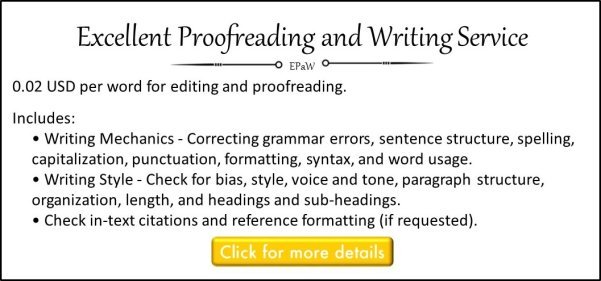English Proofreading
and Copyediting
English Proofreading
Proofreading and copyediting are stages which documents go through before they're ready for publication, submission or presentation.
Often the terms are used interchangeably, even though they refer to different stages. The term proofreading is often used to mean a process which includes a bit of copyediting. An online proofreader would usually include both English proofreading and copyediting in their service.

English language proofreading is a careful and systematic reading of the document to look for any errors in the English language used. This will include errors or mistakes in spelling, grammar and syntax. See the page about English proofreaders for more information about the people who are involved with editing and correcting documents and the skills they need.
Traditionally, proofreading was the last stage before printing, where the type setting was checked against the original to make sure that they were the same; this method of printing often introduced typos, due to human error. However, with the advent of digital publishing and publishers using digital copies, this has become less of a problem.
So modern English proofreading is the progression from that. It's the checking of documents to make sure that the correct words have been used (there or their) – this would not be spotted by a computer spell checker – or the words have been spelt correctly, often where there is only a difference of one letter between two correctly spelt words (modern typo) – again this wouldn't be spotted by a computer spell checker.
This is the importance of proofreading your writing. Alternatively you could checkout the article about the impotence of proofreading. While the spell checker on your computer is good and very useful, there are situations where it wouldn't be able to tell that a mistake had been made. You need a human to read the document, understand the document and see that a mistake has been made.
If you're doing your own correcting I've made a proofreading checklist for you to refer to. This should help you make sure you haven’t missed checking for any of the common mistakes in writing. The correction process works well as a checklist, as one of the techniques, some proofreaders use, is to read for only one type of mistake at a time, see the list of proofreading techniques and/or the list of proofreading tips to help you with your checking.
I would recommend that you use these documents, the checklist and list of techniques and tips, especially if your document is important.
There's also a page about proofreading your own document that should be able to help you if you're not sure why you should try to correct it yourself. Also there's a page about checking the grammar you've used in your writing which you might find useful if this is something you have difficulties with.
As a poorly proofread document can result is a loss of marks, a rejection or failed bid. See here for some of the reasons why it's important to proofread your own document.
I have also included a list of common marks used in English proofreading. These are used less now as much proofing and copyediting can be done using Track Changes in Microsoft Word or the alternative features in other word-processing software.

Copyediting
Copyediting is done by copyeditors, who are senior to proofreaders. They're editors. They have the power to change documents rather than just suggest changes as a traditional proofreader would've done.
Copyeditors are interested in the style and choices of language used, as well as the spelling and grammar. A copy editor's job can be summarised as the “five Cs”, which are to make a document:
- Clear
- Correct
- Concise
- Complete
- Consistent
With modern publishing a copyeditor can undertake all the tasks required of a copyeditor and a proofreader, as the job of the proofreader was to check that the text, after being set to be printed, was the same as before being set (no mistakes had been added). With digital publishing this is no longer needed. But many people look for a proofreader when they need a copyeditor.

Different types of proofreading
The requirements for correcting different types of documents are not exactly the same. If you'd like information about:
- Academic proofreading
- Essay proofreading
- Thesis proofreading
- Dissertation editing services
- Correcting medical writing
- Proofreading books
- Technical proofreading
you can go to the relevant pages to see my advice and tips for each type of document.

If you need any help or would like to ask some questions you can visit the Excellent Proofreading and Writing Facebook page where I’d be happy to help you. You can also keep up to date with all the new additions to this site at my Facebook page.
Or go to my page about the proofreading service I offer to see exactly what's included when I proofread (and copyedit) your document.

Return to Excellent Proofreading and Writing Homepage from English Proofreading and Copyediting



By Jolyon Dodgson, copyright © 2011-2020.
Excellent-Proofreading-and-Writing.com - Proofreading and writing help for excellent first impressions.





New! Comments
Have your say about what you just read! Leave me a comment in the box below.